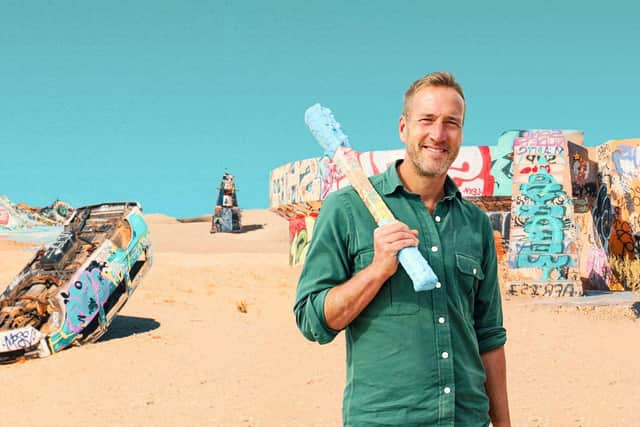Ben Fogle goes on the hunt for the Buried City
and live on Freeview channel 276
Less that 30 years ago, life on the British overseas territory of Montserrat in the eastern Caribbean was idyllic.
However, these days the tiny island, 30 miles from Antigua, is now referred to as a ‘modern Pompeii’, after a long-dormant volcano awoke and almost completely destroyed two thirds the land.
Advertisement
Hide AdAdvertisement
Hide AdThe eruption that began on July 18, 1995, was the first on Montserrat since the 19th century.
When pyroclastic flows and mudflows began occurring regularly, the capital, Plymouth, was evacuated and, a few weeks later, the city was covered in several metre-deep debris.
Then, when parts of the Soufrière Hills lava dome became unstable they collapsed forming the hot, fast moving avalanches of lava blocks, gas and dust.
Two years later, on June 25, 1997, a pyroclastic flow travelled down Mosquito Ghaut, killing 19 people who were in the officially evacuated Streatham village area. Several others suffered severe burns, while earthquakes continued to occur beneath the volcano.
Advertisement
Hide AdAdvertisement
Hide AdAfter the 1995 eruption, two thirds of the island became covered in ash making it impossible to get aid to people in need as many roads were impassable.
The ash also polluted the air, increasing breathing difficulties and cardiovascular and respiratory illnesses.
Half of the population were evacuated to the north of the island into temporary shelters, while forest fires and tsumanis destroyed even more farmland, school, hospitals.
The island’s only airport was closed making getting aid into the country difficult.
Advertisement
Hide AdAdvertisement
Hide AdThe eruption also destroyed the two main industries the island relied on; tourism and farming.


The ash covered fields killed crops and meant a year of failed harvest and no income for the many families who reply on it.
Tourism crashed for years with the only visitors coming from cruise ships to look at the famous volcano.
Vegetation was destroyed by acid rain and more than half of Montserrat’s 11,000 population left the island making it even more difficult for the island to recover.
Advertisement
Hide AdAdvertisement
Hide AdHaving previously visited Chernobyl, Ben Fogle now discovers how the Earth’s most powerful natural phenomenon gradually devastated large areas of this tiny Caribbean Island.
He hears what it was like living in the shadow of a violently explosive volcano as he uncovers stories of great heroism and loss.
Today, two thirds of the island remain a natural disaster exclusion zone.
With his local guide, Ben explores the abandoned capital of Plymouth, now an ash-covered, ghost town, with only glimpses remaining of the once thriving capital.
Advertisement
Hide AdAdvertisement
Hide AdThe landmarks of the city’s past, are now gradually being overcome by ash or reclaimed by nature, and they will soon disappear forever.
He also meets the people who remained and refused to be driven from their beloved island, rebuilding and creating new lives in villages in the north, as well as one man who has returned to live in the shadow of the volcano and carve out an existence within the exclusion zone.
Although, some people are finally returning to the island and the population is steadily climbing, there is still a lot of the rebuilding to be done in the place nicknamed the Emerald Isle of the Caribbean.